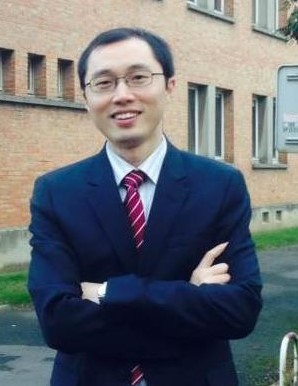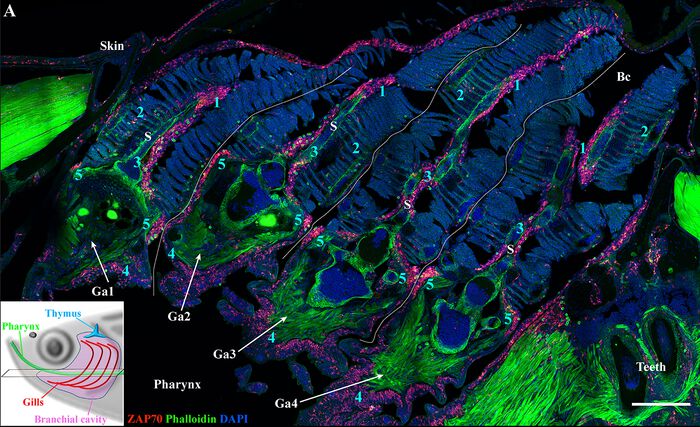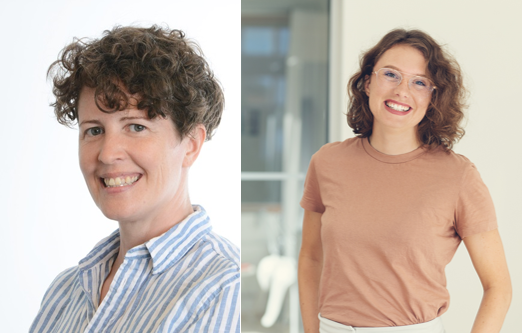Tidligere arrangementer - Side 31
Qiongpeng Luo will present his research about developing an explicit, formal semantics for the construction of subkinds in natural language.
By Knut Wiik Vollset, leader of the Bergen Telemetry Group within the Laboratory for Freshwater Ecology and Inland Fisheries (LFI), NORCE Bergen
Anne Sigrid Refsum (NTNU) har nylig levert Norges f?rste PhD-avhandling om skillingsviser. N? kommer hun til litter?rt instituttseminar for ? presentere forskningen sin.
Future robots need to be robust and adaptable, and new design approaches are needed for new production methods. I will talk about my research in using evolutionary algorithms and biologically inspired methods with the aim of having more intelligent, robust, and adaptive behavior in robots. I will give a short introduction to some of the algorithms and show how we apply them in our robotic platforms for exploring automatic design and adaptation.
Hvordan kan politikere legitimere utsettelser og forsinkelser i klimapolitikken? Hva slags forestillinger om tid settes i spill n?r teknologisk utvikling ikke f?lger politisk etablerte frister, klimam?l og internasjonale forpliktelser?
Frode Kristian Hansen, Cosmology and Extragalactic Astronomy research group, Institute of Theoretical Astrophysics, University of Oslo.
Veronka ?rsike Asztalos (University of Szeged) will present her research on Ibsen and Bj?rnson's Hungarian reception.
Department seminar. Stefan Pollinger is and Assistant Professor at Sciences Po, Paris. He will present the paper: "Kinks Know More: Policy Evaluation Beyond Bunching with an Application to Solar Subsidies."
With a proportion of 43 percent of women in its national legislature since 2020, Taiwan has arguably become Asia's leader in women's political representation. Dr. Chang-Ling Huang offers some perspectives on how and why that is.
The Departmental Seminar Series features Professor Joel Robbins, Department of Social Anthropology, University of Cambridge
C*-algebra seminar by Gaute Schwartz (University of Oslo)
Arnd Schneider and Pasi V?liaho invite the interested public to discuss the research agenda of their initiative "'Democracy' Otherwise" with a film screening and panel discussion as well as an academic seminar.
An ethnography of young women’s reproductive futures anchored on the COVID-19 vaccination infertility rumors in Khwisero, Western Kenya. Guest Speaker: Mariam Yusuf, University of Nairobi
Invited speaker Elinor Ben-Menachem from Sahlgrenska Academy, Sweden, will present on using clinical insights to drive epilepsy drug development.
Join us on a journey into the nuances of the fish immune system and their implication for health management in aquaculture.
Department seminar. Kjell G. Salvanes is a Professor in labor economics at NHH, research director at CELE since 2012, and deputy director of the Centre of Excellence FAIR (Centre for Experimental Research on Fairness, Inequality and Rationality). He will be presenting "Childhood Shocks Across Ages and Human Capital Formation" (written with Pedro Carneiro and Alexander Willén).
Jenny Gudmundsen and Jessica Pedersen Belisle Hansen present a conversation analysis of second language communication in a video-mediated environment
Jenny Gudmundsen and Jessica Pedersen Belisle Hansen present a conversation analysis of second language communication in a video-mediated environment
By Andrew Maccoll, the University of Nottingham, United Kingdom
Engineering principles to develop advanced biomaterials and scaffolds. This study focuses on utilising engineering principles to facilitate new bone growth, specifically in designing and fabricating bone scaffolds. The core of our investigation lies in applying titanium dioxide (TiO2) scaffolds, which have emerged as promising candidates due to their osteoconductive properties and the potential for enhancing bone tissue engineering.
Our research aims to bridge the gap between engineering and biology by harnessing fluid mechanics and material science to create scaffolds that mimic the natural bone environment. By comparing TiO2 scaffolds with commercial porous calcium phosphate biomaterials under simulated perfusion culture conditions, we delve into the mechanical and fluidic stimuli that are crucial for bone regeneration. The study emphasises the role of fluid dynamics to make better “spare-parts” for the human body, highlighting the importance of permeability, mechanical load transfer and wall shear stress with a porous ceramic.
Furthermore, we validate our fluid mechanic simulations with the impact of dynamic seeding techniques. Our findings demonstrate the superiority of dynamic culture conditions in enhancing the expression of bone-related proteins and genes, thereby facilitating more effective bone regeneration. In addition, the study presents a clinical trial that shows that these porous bioceramic functions well in patients. The trial's outcomes confirm the potential of TiO2 scaffolds for in vivo bone formation and showcase the successful integration of engineering principles in the development of biomaterials for tissue engineering.
This research underscores the pivotal role of engineering in advancing tissue engineering and biomaterials science. By leveraging engineering principles to optimise scaffold design and functionality, we pave the way for innovative strategies in bone regeneration, offering new hope for patients requiring bone tissue reconstruction.
In this lecture Catherine Malabou will explore educational and aesthetic questions around the possibility of representation based on the discussion between Lyotard and Rancière. Her reflections start with her very recent book Stop Thief! Anarchism and Philosophy (2023).
Join us for a seminar on Media Identities and Risks with Primus Tazanu
Department seminar. Felix Bierbrauer is a Professor and the Chair for Public Economics and Center for Macroeconomic Research at the University of Cologne. He will present the paper: "Is a market-based approach to climate policy desirable?"
The techno-politics of the ‘China Model’ of development









.jpg?alt=listing)





